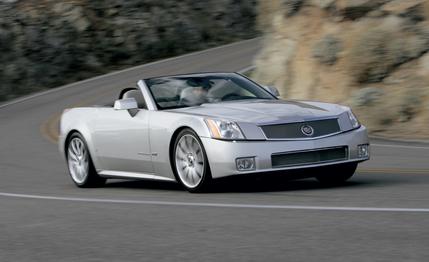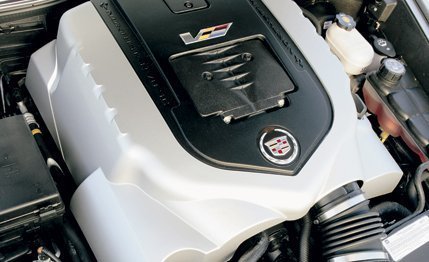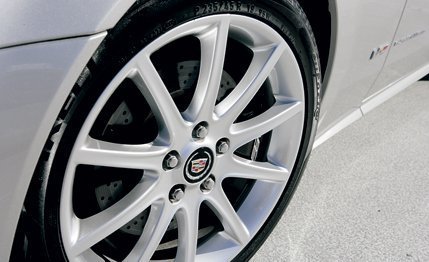
 Road Test
Road Test
Cadillac's V-series is to that nameplate what AMG is to Mercedes or M is to BMW. It's the high-performance wing of the company, where the original product (and its price) gets kicked up some serious notches. It is also a pretty brave enterprise at Cadillac. Running up your colors in the company of cars that define the art of corporate hot rodding is an unmistakable signal of intent.
With its XLR-V, Cadillac puts a player in among the SL55 AMGs and Jaguar XKRs of the world—cars with performance and pedigree to spare. So how does the XLR-V match up, this low-slung, high-end pretender to the thrones of Europe?
In some areas, very well indeed. The new 4.4-liter supercharged version of GM's Northstar V-8 is an exceedingly sophisticated engine. Pressurized by a GM-designed and patented Roots-type blower made by Eaton, the engine supplies prodigious torque throughout most of its operating range. Continuously variable valve timing at all four cams undoubtedly helps spread the available torque around so the car almost always responds to a jab at the pedal with a surge of acceleration.
The Northstar is also endowed with desirable versatility, able to purr around at lower engine speeds as befits a luxury marque, then snarl to the redline with almost shocking ferocity. Part of this Jekyll-and-Hyde act is due to a muffler that suppresses low-rev noise levels and then switches to a more free-flowing mode at higher speeds when a vacuum-operated valve opens, allowing the exhaust gases a more direct path to the atmosphere.


Also part of this suave schizophrenia is a host of detail work done on the Northstar to retain necessary levels of refinement along with elevated power output. The reduction in displacement (from 4.6 to 4.4 liters) was achieved by reducing the size of the cylinder bore—thus increasing the amount of metal between those cylinders—and was considered necessary in the interests of durability. That blower is housed in a casting that is integrated with the Laminova tube-type intercooler and the intake tract in one rigid unit, and it works extremely well at reducing unwanted supercharger whine.
The engine block is a unique casting that provides improved coolant flow and has a new oil gallery to supply under-piston cooling jets. Lower-compression cast-alloy pistons necessitated a rebalancing of the crankshaft, and the accessory drive required a redesign and a new, wider three-sheave pulley to power the blower. That's no small issue, since the supercharger soaks up nearly 80 horsepower at maximum speed.
Still, the engine manages to keep some of that extra power to itself, punching out 443 horsepower at 6400 rpm, enough to propel this 3840-pound convertible to 60 mph in 4.7 seconds and through the quarter-mile in 13 seconds flat. More important to everyday users is the 414 pound-feet of torque, of which 90 percent is available between 2200 and 6000 rpm.


All that torque just about precludes the need for a downshift in most scenarios, but the intelligent 6L80 six-speed automatic transmission will probably hand you one (or two) anyway when you squeeze the throttle. This rear-mounted six-speed provides almost intuitive response to a driver's inputs with Caddy's performance shift algorithm, which refrains from shifting up on a trailing throttle when cornering. It can be operated in manumatic mode by tapping the lever into an adjacent selector slot. This action also informs the magnetorheological shocks to switch to sportier settings.
The XLR-V's chassis is upgraded from the naturally aspirated base model's by having a solid front anti-roll bar, a rear anti-roll bar (not present on the V-less XLR), stiffer rear lower-control-arm bushings, and a recalibrated ride program. All of this results in a flat and well-controlled stance on the road, and the ride is still considerably better than that of the Corvette with which this car shares so much platform architecture. At least part of that arises from the more-modest tire sizes, increased though they are from those of the base XLR.